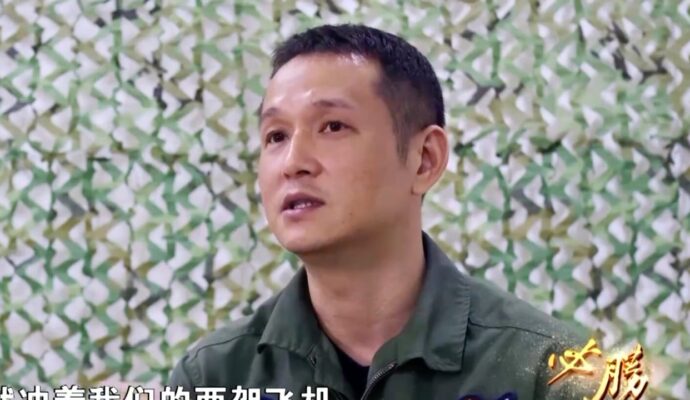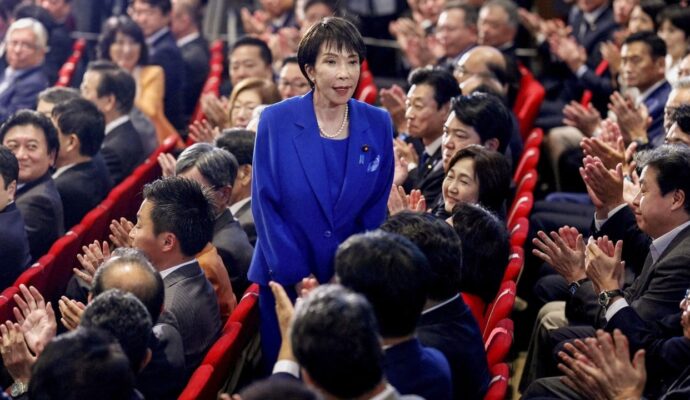Up for consideration on a Thursday afternoon in May was approval of Pacific Pipeline’s new cannabis outlet in an empty, graffiti-strafed storefront along San Bruno Avenue, a main thoroughfare in the heavily Chinese Portola district.
Lee and her group strongly opposed it, claiming that cannabis was highly addictive, led young people to ruin and evoked China’s opium war and century of humiliation.
Hazel Lee (left) and fellow opponents of a new cannabis dispensary in San Francisco’s heavily Asian Portola neighbourhood. Photo: Mark Magnier
“It’s too much,” said Lee, who has rallied against dispensaries for a decade. “These marijuana shops are proliferating so quickly, there are more dispensaries than rice stores … More robberies will come, and more violence.”
On the other side are younger Asian-Americans fighting against what they see as outdated values and blatant misconceptions, often starting within their families.
“We need education. Most of these protesters are from a very small subset of the Chinese community, primarily elderly based immigrants, who grew up in the Cultural Revolution,” said David Ho, a minority investor in the Portola dispensary.
“The whole Chinese community thinks I’m a drug dealer.”
For Ho and others, fighting the overhang of shame is a serious mission. When Ophelia Chong learned in 2015 that a relative used cannabis, she considered them a degenerate stoner.
Confronting stereotypes she grew up with, she researched the science and history, and ultimately embraced what she sees as marijuana’s health and social benefits.
She subsequently founded Asian Americans for Cannabis Education, a non-profit working to boost acceptance in a community with a “different history, culture and social stigma” toward marijuana – and to counter the likes of Lee and friends.
“I found my ethnic group had a high percentage of anti-cannabis people,” Chong said.
“When licenses come up for voting, they flood [the hearings] with little old ladies. They have laminated cards that say ‘What about the children?’ We say ‘What about them? They can’t have it.’
“It’s very hypocritical.”
Elizabeth Ho in “Disjointed”. Photo: Netflix
“It’s difficult to be in cannabis when your family looks so down on it,” said Caroline Yeh, co-founder of TSUMo Snacks, which makes shrimp chips, spicy cheesy ramen and other fare infused with marijuana derivatives.
Her career choice after business school jolted her Taiwanese-born parents, who still do not outwardly acknowledge what she does – or her success, which has been touted in Forbes, Food and Wine and The Los Angeles Times.
Hip hop legend Snoop Dogg was an early investor in Yeh’s company, which recently released Uncle Snoop’s “Snazzle Os” – cannabis-infused spicy onion rings.
“As a child of Asian immigrants, it’s also very difficult for parents to communicate with their children, especially because I’m an American, they’re immigrants,” Yeh noted.
One common bridge-building approach taps shared culture. Marijuana appears in Chinese texts dating to the Warring States Period (475–221 BC); a remedy for constipation, mental illness and cramps; is cited by Confucius and Mencius and found in numerous tombs.
Wendy Zeng, owner of Drizzle Catering, develops cannabis creations inspired by her Sichuan culinary roots. Photo: Bailey Robb for Drizzle
Another path to grudging acceptance has come from supplying cannabis for pain relief to relatives undergoing chemotherapy. Others report gradually wearing down parental resistance.
Jung joined Morgan Stanley after business school, impressing his parents, but lost interest and turned to start-ups, working at Twitter, payday lender LendUp – and cannabis information firm WeedMaps and PAX, companies they had never heard of and considered dodgy.
“My foray into tech beat them into submission, that I wouldn’t do the classic happy path of doctor or lawyer,” said Jung. “There have been a series of what to them are probably bad decisions. They kind of resisted at first, but eventually said ‘Just promise us you won’t go to jail.’”
Despite state legalisation, the federal government still lists cannabis along with heroin and LSD as a Schedule 1 dangerous drug, creating a legal limbo.
Business owners cannot write off expenses or openly use a bank account or credit card even as they juggle oversupply and other inventory problems. “You can’t be faint of heart,” Ho said.
And as Asian-Americans face more prejudice and violence, some fear collateral damage from the industry’s illegal side, which accounts for an estimated 75 per cent of the US$100 billion business, following a string of busts linked to Chinese gangs and nationals.


